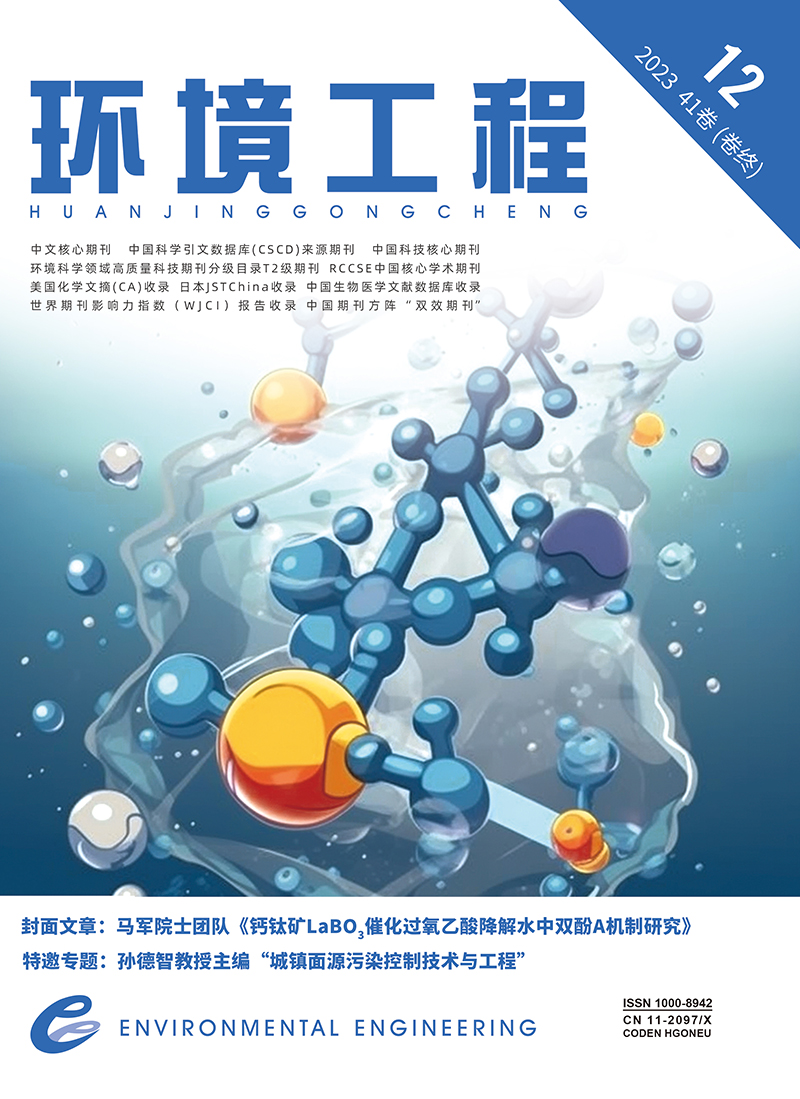| [1] |
卢宏. 旅游碳足迹的测算研究进展与展望[J]. 旅游研究, 2018, 10(2): 75-83.
|
| [2] |
GÖSSLING S. Global environmental consequences of tourism[J]. Global Environmental Change, 2002, 12(4): 283-302.
|
| [3] |
YUAN H, NIE K, XU X. Relationship between tourism number and air quality by carbon footprint measurement: a case study of Jiuzhaigou Scenic Area[J]. Environmental Science and Pollution Research, 2021, 28(16): 20894-20902.
|
| [4] |
王群,杨兴柱. 境外旅游业碳排放研究综述[J]. 旅游学刊, 2012, 27(1): 73-82.
|
| [5] |
WANG S, HU Y, HE H, et al. Progress and prospects for tourism footprint research[J]. Sustainability, 2017, 9(10): 1847.
|
| [6] |
OBERSTEINER G, GOLLNOW S, ERIKSSON M. Carbon footprint reduction potential of waste management strategies in tourism[J]. Environmental Development, 2021, 39: 100617.
|
| [7] |
SUSILORINI R M I R, ISMAIL A, WASTUNIMPUNA B Y A, et al. Tourism village carbon footprint after COVID-19 pandemic: a challenge to sustainability[J]. Sustainability, 2022, 14(4): 2400.
|
| [8] |
RICO A, MARTÍNEZ-BLANCO J, MONTLLEÓ M, et al. Carbon footprint of tourism in Barcelona[J]. Tourism Management, 2019, 70: 491-504.
|
| [9] |
BECKEN S, PATTERSON M. Measuring national carbon dioxide emissions from tourism as a key step towards achieving sustainable tourism[J]. Journal of Sustainable Tourism, 2006, 14(4): 323-338.
|
| [10] |
唐承财,钟林生,成升魁. 旅游业碳排放研究进展[J]. 地理科学进展, 2012, 31(4): 451-460.
|
| [11] |
LUO Y, MOU Y, WANG Z, et al. Scenario-based planning for a dynamic tourism system with carbon footprint analysis: a case study of Xingwen Global Geopark, China[J]. Journal of Cleaner Production, 2020, 254: 119999.
|
| [12] |
PEREIRA R P T, RIBEIRO G M, FILIMONAU V. The carbon footprint appraisal of local visitor travel in Brazil: a case of the Rio de Janeiro-São Paulo itinerary[J]. Journal of Cleaner Production, 2017, 141: 256-266.
|
| [13] |
KITAMURA Y, ICHISUGI Y, KARKOUR S, et al. Carbon footprint evaluation based on tourist consumption toward sustainable tourism in japan[J]. Sustainability, 2020, 12(6): 2219.
|
| [14] |
杜鹏,杨蕾. 中国旅游交通碳足迹特征分析与低碳出行策略研究[J]. 生态经济, 2015, 31(2): 59-63.
|
| [15] |
FILIMONAU V, DICKINSON J, ROBBINS D. The carbon impact of short-haul tourism: a case study of UK travel to Southern France using life cycle analysis[J]. Journal of Cleaner Production, 2014, 64: 628-638.
|
| [16] |
钟永德,石晟屹,李世宏,等. 中国旅游业碳排放计量框架构建与实证研究[J]. 中国人口·资源与环境, 2014, 24(1): 78-86.
|
| [17] |
DUAN X, ZHANG J, SUN P, et al. Carbon emissions of the tourism telecoupling system: theoretical framework, model specification and synthesis effects[J]. Environmental Research and Public Health, 2022, 19(10): 5984.
|
| [18] |
ZHA J, TAN T, YUAN W, et al. Decomposition analysis of tourism CO2 emissions for sustainable development: a case study of China[J]. Sustainable Development, 2019, 28(1): 169-186.
|
| [19] |
涂玮,刘钦普. 基于森林碳汇阈值的江苏省旅游碳排放环境风险评价[J]. 林业资源管理, 2022(1): 86-94.
|
| [20] |
TANG C, ZHONG L, NG P. Factors that influence the tourism industry's carbon emissions: a tourism area life cycle model perspective[J]. Energy Policy, 2017, 109: 704-718.
|
| [21] |
LUO F, MOYLE B D, MOYLE C J, et al. Drivers of carbon emissions in China's tourism industry[J]. Journal of Sustainable Tourism, 2020, 28(5): 747-770.
|
| [22] |
GÖSSLING S, PEETERS P, CERON J, et al. The eco-efficiency of tourism[J]. Ecological Economics, 2005, 54(4): 417-434.
|
| [23] |
LAROCHE P C S J, SCHULP C J E, KASTNER T, et al. The role of holiday styles in shaping the carbon footprint of leisure travel within the European Union[J]. Tourism Management, 2023, 94: 104630.
|
| [24] |
王志秀,王志宝,庞玉建. 中国大陆旅游业碳足迹与碳承载能力动态研究[J]. 西安理工大学学报, 2022,38(4):462-475.
|
| [25] |
石培华,吴普. 中国旅游业能源消耗与CO2排放量的初步估算[J]. 地理学报, 2011, 66(2): 235-243.
|
| [26] |
王峥,程锦红,程占红. 中国旅游业碳均衡区域差异及其影响因素[J]. 生态学报, 2021, 41(20): 8063-8075.
|
| [27] |
MENG W, XU L, HU B, et al. Reprint of: Quantifying direct and indirect carbon dioxide emissions of the Chinese tourism industry[J]. Journal of Cleaner Production, 2017, 163: S401-S409.
|
| [28] |
YU L, BAI Y, LIU J. The dynamics of tourism's carbon footprint in Beijing, China[J]. Journal of Sustainable Tourism, 2019, 27(10): 1553-1571.
|
| [29] |
姜东晖,靳雪. 基于终端消费的山东省旅游碳足迹研究[J]. 中国人口·资源与环境, 2015, 25(增刊1): 450-453.
|
| [30] |
周琰,管瑞龙. 旅游业碳足迹估算模型应用:以福建省为例[J]. 中国物价, 2012(12): 85-87.
|
| [31] |
王立国,廖为明,黄敏,等. 基于终端消费的旅游碳足迹测算:以江西省为例[J]. 生态经济, 2011(5): 121-124.
|
| [32] |
唐婧. 低碳旅游生态循环经济系统构架研究:以湖南为例[J]. 湖南社会科学, 2010(5): 131-134.
|
| [33] |
KUO N, CHEN P. Quantifying energy use, carbon dioxide emission, and other environmental loads from island tourism based on a life cycle assessment approach[J]. Journal of Cleaner Production, 2009, 17(15): 1324-1330.
|
| [34] |
郑群明,陈子奇. 基于碳足迹的旅游生态效率研究:以江西九江市为例[J]. 湖南师范大学自然科学学报, 2022(5): 74-82.
|
| [35] |
崔杨,张瑜,何冬晓,等. 基于终端消费的日照市旅游碳足迹测算与评价研究[J]. 绿色科技, 2022, 24(7): 154-158.
|
| [36] |
梁晖. 以神农架为例的旅游者碳足迹测算与分析[J]. 商展经济, 2022(2): 39-43.
|
| [37] |
伍卓. 区域旅游碳足迹测度:以南岳风景区为例[J]. 系统工程, 2015, 33(12): 107-114.
|
| [38] |
李鹏,黄继华,莫延芬,等. 昆明市四星级酒店住宿产品碳足迹计算与分析[J]. 旅游学刊, 2010, 25(3): 27-34.
|
| [39] |
李伯华,刘云鹏,窦银娣. 旅游风景区旅游交通系统碳足迹评估及影响因素分析:以南岳衡山为例[J]. 资源科学. 2012, 34(5): 956-963.
|
| [40] |
LUO F, BECKEN S, ZHONG Y. Changing travel patterns in China and 'carbon footprint' implications for a domestic tourist destination[J]. Tourism Management, 2018, 65: 1-13.
|
| [41] |
刘畅,韩梅,王洪桥,等. 长白山景区旅游交通碳足迹时空结构研究[J]. 生态经济, 2018, 34(4): 70-74.
|
| [42] |
世界旅游及旅行理事会. 旅游业经济影响报告[R]. 2022.
|
| [43] |
南平市生态环境局. 南平市减污降碳协同增效实施方案(征求意见稿)[R]. 2022.
|
| [44] |
中国城市温室气体工作组. CPCD, China Products Carbon Footprint Factors Database[EB/OL].http://lca.cityghg.com/.
|
| [45] |
武夷山市统计局. 武夷山市统计年鉴(2021)[R].2021.
|
| [46] |
中华人民共和国中央人民政府. 中华人民共和国文化和旅游部2021年文化和旅游发展统计公报[R].2021.
|
| [47] |
韩元军,吴普,林坦. 基于碳排放的代表性省份旅游产业效率测算与比较分析[J]. 地理研究, 2015, 34(10): 1957-1970.
|
| [48] |
董红艳,刘钦普,周丽,等. 江苏省旅游业碳足迹与碳承载力动态对比分析[J]. 生态经济, 2018, 34(11): 183-187.
|
| [49] |
曹辉,闫淑君,雷丁菊,等. 近十年福建省旅游碳足迹的测评[J]. 安全与环境学报, 2014, 14(6): 306-311.
|
| [50] |
查建平,戴家权,刘珂吉,等. 旅游增长与碳排放脱钩状态及其驱动因素研究:一个新的脱钩分析框架[J]. 旅游学刊, 2022, 37(4): 13-24.
|


 Login
Login Register
Register E-alert
E-alert






 DownLoad:
DownLoad: